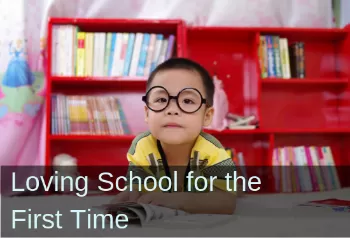Primitive Reflex Integration Case Studies
Massive Improvement in Daily Functioning for 5-Year-Old with Severe Trauma
Rhythmic movements make a big difference for anxiety and attention
Disruptive behavior, anxiety, and an inability to pay attention—suspected as a result of physical trauma—made a classroom environment difficult to navigate for this little boy. Read how after three months of rhythmic movements and primitive reflex integration, he is a much calmer and happier child, and able to enjoy school.
Submitted by JM, Occupational Therapist

| Before | After |
|---|---|
| Disruptive and non-compliant | Participates calmly |
| Did not participate with the others | Navigates a classroom environment with 19 other students |
| Had trouble following along with the teacher at carpet time | Goes into a regular classroom for 30 minutes of academic instruction |
| Unable to participate in any handwriting activities, except scribbling | Learning how to form a recognizable B |
| Did not know that the first letter of his name started with B | Able to identify 5 uppercase letters |
Braxton is a 5-year-old who transferred to my school district as a kindergartner. I initially saw him at our summer kinder camp one-week program to integrate new kindergartners to the school environment. He was very disruptive and non-compliant. He did not participate with the others and had trouble following along with the teacher at carpet time. Braxton was unable to participate in any handwriting activities presented to him except scribbling. He did not know that the first letter of his name started with B. His mother was very concerned; however she never said anything to the staff.
I approached the mother to gain background information. Once I initiated conversation with the parent, I found out he has several medical diagnoses including unspecified anxiety disorder, attention deficit/hyperactivity disorder combined presentation, moderate; oppositional defiant disorder, moderate; academic or educational problems; parent-child relational problems; and unspecified problems related to social environment.
He had an IEP that would be transferring to our school district from his transitional conference from preschool in August. His school psycho-educational evaluation report, speech and language evaluation, occupational therapy reports and social history included two concussions, staples to his head, severe burn on an arm and a fractured arm. He stayed in the hospital for several hours at times for observations after his concussions.
I spent a week with Braxton just helping him learn to feel safe in the kindergarten environment. I encouraged him to ask for help when he didn’t understand what the teacher wanted him to do, instead of having a meltdown or behavioral outburst. I met with him a couple of times socially before school started to develop a trusting relationship with him. An updated home sensory evaluation was performed to get a picture of the home environment.
Once school started, I had several meetings with the mother and asked permission to perform rhythmical movements and Brain Tune Up exercises [both from the Brain and Sensory Foundations First Level course] with Braxton. There was no resistance. He had trouble with head movements during the rhythmical movement exercises.
His placement in August was within the self-contained special education department where he received 80% or more of his academic instruction from small group instruction. The only times he participated with normally developing peers were during breakfast, lunch, recess and enrichment class (art, music, library, PE and STEM).
I slowly integrated all our rhythmic movements from the Brain and Sensory Foundations Level 1 course along with the Brain Tune Ups. After two weeks, I invited his mother to come and watch his therapy sessions to learn the movements. He became a totally different person. He was very oppositionally defiant with her presence in his therapy sessions. He did not say nice things to her. Mom and Braxton were encouraged to try the exercises at home. Mom would meet with me and say that he would tell her she was not doing them correctly. I reassured her that she was and needed to take suggestions from him when performing them. They needed to learn to integrate their bodies together.
It is now three months later. He is loving school and enjoys coming every day. Before when he was in preschool he always stated he hated school. He is learning how to form a recognizable B, able to identify 5 uppercase letters, starting to rote count numbers from 1-20, able to go into a regular classroom for 30 minutes of academic instruction with 19 other students and not know he has a disability.
Mom and Braxton have developed a daily routine with the RM and he continues to make positive changes with academic, fine motor and handwriting gains.
This course has been an eye opener on how important the use of movement is with all areas of development. It is important not only in therapy, but to be integrated in to his daily routine at home. His mother is very pleased with his results and he asks to come see me daily. This therapeutic technique has given his mother hope on being able to learn.
He has participated in occupational therapy and speech and language therapy for several years with minimal success until now. [Edited for length and clarity; emphasis added]
*Disclaimer: The activities in the Brain and Sensory Foundations curriculum make use of the natural processes of neuroplasticity and development that are innately wired in the design of human beings to promote maturity and function. These activities appear to calm, organize, and mature the neuro-sensory-motor systems just as we see in the healthy development of human infants. Individual results may vary, and we do not claim to offer a diagnosis or cure for any specific condition or disorder. The Brain and Sensory Foundations activities appear to improve overall functioning resulting in measurable improvements for a range of conditions as demonstrated in over 1800 case studies from participants.

